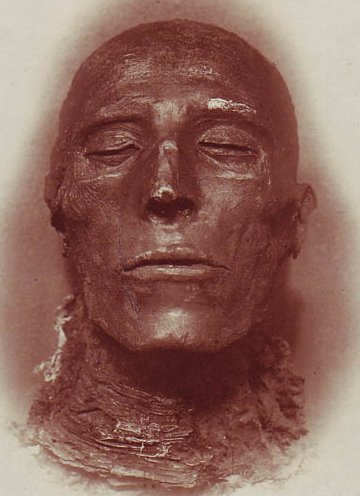Sunday, July 21, 2013
Blogging Marvel’s Dracula in the 1980s
Bram Stoker’s immortal vampire had left an indelible mark on the comic book industry of the 1970s with Marvel Comics’ award-winning "Tomb of Dracula" series and its spin-offs. By the following decade, Marvel was ready to put the final stake in the now tired property. The storyline to rid the Marvel Universe of vampires was spread across multiple titles in 1982 and 1983 beginning with Marvel’s biggest title of the decade, "The Uncanny X-Men."
Writer Chris Claremont and artist Bill Sienkiewicz kicked the storyline off in Issue #159 of "The Uncanny X-Men" in a clever update of the Stoker novel that sees Storm falling victim to Dracula. Claremont cleverly starts off with the team frantically rushing to the hospital where their friend has been hospitalized from dramatic blood loss stemming from a mysterious throat wound. Storm remembers nothing of the attack, has mystified the attending physician by her seemingly miraculous recovery, and yet is decidedly not herself exhibiting a peculiar morbid fixation. The one flaw is the story is too rushed. Claremont and Sienkiewicz’s handling of Dracula is the best since Marv Wolfman and Gene Colan, if lacking in their unique style and flair. What should have been a multi-part storyline is truncated to fit in a single issue.
Happily, the story served as a prelude to that year’s "Uncanny X-Men" Annual #6 which developed the storyline further with Storm struggling with Dracula’s hold over her soul, Kitty Pryde falling to possession by Lilith, Dracula’s daughter, Rachel Van Helsing turned into Dracula’s vampire bride, and the Lord of Vampires seeking possession once more of the mystical tome, the Darkhold which contains the Montesi Formula, the fabled key to wiping out all vampires from the face of the Earth. Once again, the fault is that the story needs far more space than it was allotted. It is a joy to see so many plot strands from "Tomb of Dracula" being taken up and it is clear that the story is building to a greater story arc, but these stories could have been so much more and with a talented writer and artist team such as Claremont and Sienkiewicz, it is unfortunate they were not.
TO CONTINUE READING THIS ARTICLE, PLEASE VISIT THE BLACK GATE ON FRIDAY.
Labels:
Comic Art,
horror,
Marvel Comics,
Tomb of Dracula,
vampires
Thursday, July 11, 2013
Blogging Sax Rohmer’s President Fu Manchu, Part Four
Sax Rohmer’s "The Invisible President" was originally serialized in "Collier’s" from February 29 to May 16, 1936. It was published in book form later that year by Cassell in the UK and Doubleday in the US under the title "President Fu Manchu." The novel is the first in the series to fictionalize real events with characters based on familiar figures in the US in the 1930s such as Huey Long and Father Charles Coughlin. More than one critic has noted the story may have influenced the classic Cold War conspiracy thriller "The Manchurian Candidate."
The key to tracking down Fu Manchu comes from the most unlikely of sources. It is Robbie Adair, Moya’s four-year old son, who mentions to Mark Hepburn about the mad man who lives at the Stratton Building, the high-rise across the street from Robbie’s apartment, who makes sculptures of a bust and hurls them down to the street below. Robbie also mentions “Yellow Uncle” who is kind to him and gave him his own auto for his birthday. Moya dismissed the stories as a little boy’s imagination, but Hepburn realizes the auto is in fact a toy car and “Yellow Uncle” is very real.
The mad man Robbie sees is Professor Morgenstahl, a brilliant German scientist believed dead who is now a slave to the Si-Fan and installed at the Stratton Building. During his free hours each day, he sculpts a bust of Fu Manchu and hurls it to the pavement below in impotent rage.
TO CONTINUE READING THIS ARTICLE, PLEASE VISIT THE BLACK GATE NEXT FRIDAY.
Labels:
conspiracy,
Fu Manchu,
pulp fiction,
Sax Rohmer,
thriller,
Yellow Peril
Thursday, July 4, 2013
Blogging Sax Rohmer’s President Fu Manchu, Part Three
Sax Rohmer’s "The Invisible President" was originally serialized in Collier’s from February 29 to May 16, 1936. It was published in book form later that year by Cassell in the UK and Doubleday in the US under the title "President Fu Manchu." The novel is the first in the series to fictionalize real events with characters based on familiar figures in the US in the 1930s such as Huey Long and Father Charles Coughlin. More than one critic has noted the story may have influenced the classic Cold War conspiracy thriller "The Manchurian Candidate."
The presidential debate is the centerpiece of the book and is masterfully played out by Rohmer. Abbot Donegal turns up and is taken into protective custody by the FBI. Dr. Prescott attends the debate at Carnegie Hall and, thanks to his having been drugged by Fu Manchu earlier, makes a complete shambles of countering the progressive candidate, Harvey Bragg. The audience at Carnegie Hall and those listening around the country to the radio broadcast are shocked at how badly the conservative candidate loses the debate.
As the triumphant Bragg tells the press afterwards that he will transform the United States and then the rest of the world, one of his union backers, Paul Salvaletti clicks off the names of the continents. As he says “Asia,” Herman Grosset’s brainwashed programming clicks into gear. He brandishes a pistol and shoots and kills Harvey Bragg on the spot. Bragg’s security guards turn their weapons on Grosset and shoot him dead seconds later.
TO CONTINUE READING THIS ARTICLE, PLEASE VISIT THE BLACK GATE NEXT FRIDAY.
Labels:
conspiracy,
Fu Manchu,
pulp fiction,
Sax Rohmer,
thriller,
Yellow Peril
Subscribe to:
Comments (Atom)


.jpg)